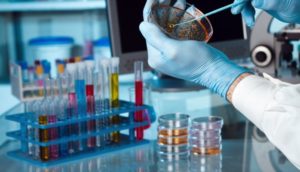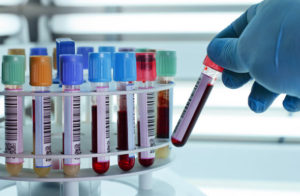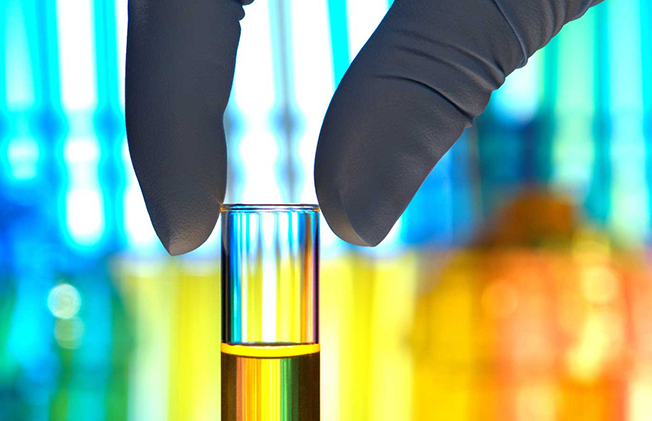Anderson Triggs: A Clinical Laboratory Explanation
Clinical laboratory, as known as a medical laboratory, is a laboratory whereby clinical specimens are tested in order to facilitate diagnosis of a disease. This important in order to give accurate prescriptions or diagnosis during treatment. Clinical laboratories are divided into two departments. These are:
1. Clinical pathology: this is the testing of blood fluids (urine, blood, cerebrospinal fluids) and tissues by using microscopic, serologic and chemical methods. Basically, these are the tests that are familiar to the general public. These tests are urinalysis, blood cell counts, blood sugar levels, throat cultures and coagulation studies.
2. Anatomical pathology: this is the testing of surgical specimens removed from the body. It also covers examination of the whole body. These tests are examination of cells under a microscope, determining of the presence of immunological markers in the cells and establishing the molecules of the organs cells and tissues.
 In the United States of America, Florida, clinical laboratory discussion is not complete without mentioning Anderson Triggs of Florida. He is the founder of Triggs Global Management in South Florida. It is a consulting company that provides clinical laboratory consulting to businesses. He has unique principles in honesty, discipline, credibility and in delivery of his services.
In the United States of America, Florida, clinical laboratory discussion is not complete without mentioning Anderson Triggs of Florida. He is the founder of Triggs Global Management in South Florida. It is a consulting company that provides clinical laboratory consulting to businesses. He has unique principles in honesty, discipline, credibility and in delivery of his services.
The following is the Anderson Triggs take of what clinical laboratory does:
1. Toxicology: These are tests that are done on living organisms to establish the extent of damage caused by chemicals or other physical agents. It identifies the adverse effects of that substance. Chemical toxicity is determined by the dosage (the quantity and the time of exposure) and the route of exposure (skin absorption, inhalation or ingestion).Other determinants are the environment, age, sex, health and individual characteristics. Further tests on toxicology will establish whether the substances would cause abnormal growth of body cells thus leading to cancer
2. Blood testing: The study of blood is referred to as hematology, and clinical testing determines the effect of production of blood and its components. These tests are full blood counts, blood films, blood cells, blood proteins, bone marrow, blood coagulation and blood vessels. Blood testing is done in diagnosis of diseases such as blood cancer, leukemia, hemophilia and other bleeding disorders.
3. Urine testing: The tests done on urine in diagnosis of infections are urinalysis, urine culture and determination of urine electrolyte levels. Basic tests are visual for the color, and smell. The color of urine for a normal person is yellow-amber, a lighter shade points towards a lot of water intake and a darker shade could be caused by dehydration, leakage of blood or medication. A common test for urinalysis is done by using urine test strips in which the results are interpreted by the color changes. Urine tests are used to establish diabetic, bile metabolism, jaundice disease or urinary tract infection.
 4. Saliva test: This test will establish adrenal conditions, female altered hormones, menopause, male altered hormones, abnormal metabolism, HIV, viral hepatitis and amoebas. The test involves collecting saliva in a sterile container or swabbing with a cotton swab then taking it to the laboratory. Basic saliva testing involves application of a chemical then observing the color changes which will determine whether the results are positive or negative. Other tests are enzyme-linked immunosorbent assay (ELISA), high-resolution mass spectrometry (HRMS) and polymerase chain reaction (PCR).
4. Saliva test: This test will establish adrenal conditions, female altered hormones, menopause, male altered hormones, abnormal metabolism, HIV, viral hepatitis and amoebas. The test involves collecting saliva in a sterile container or swabbing with a cotton swab then taking it to the laboratory. Basic saliva testing involves application of a chemical then observing the color changes which will determine whether the results are positive or negative. Other tests are enzyme-linked immunosorbent assay (ELISA), high-resolution mass spectrometry (HRMS) and polymerase chain reaction (PCR).
5. Histopathology: these tests on surgical specimens or biopsy. The specimens are first processed and placed on glass slides. The specimens are prepared to stabilize it hence preventing decay by removing water. For larger specimen, a sample is extracted that will be a representative that will produce accurate results. Histopathology is done by frozen section processing or chemical fixation. The difference is in the preparation of the specimens, whereas the former freezes it and the later uses chemicals such as formalin. These tests majorly used in diagnosis of cancer.
6. Microbiology testing: these tests specialize in infection diseases that are caused by viruses, parasites, fungi and bacteria. The test involves study of pathogens, that is, their characteristics, growth, mode of infection and transmission. Diseases treated after microbial testing are tuberculosis, malaria, typhoid, Candida, rotavirus, etc. These diseases are transmitted through direct contact, indirect contact, inhalation and the environment. These tests are also used to prevent and control outbreaks of diseases. Microbiology testing involves culture of the samples, biochemical testing, microscopy and genotyping.
Anderson Triggs: The Conclusion Of This Topic
Anderson Triggs of Florida is a Clinical Laboratory and Compounding Pharmacy expert who currently is President of Triggs Global Management, Inc. Anderson Triggs blogs weekly about topics related to his passions, interests and career experiences. For more information regarding Anderson Triggs, check out http://www.andersontriggs.net or http://www.andersontriggs.org.
